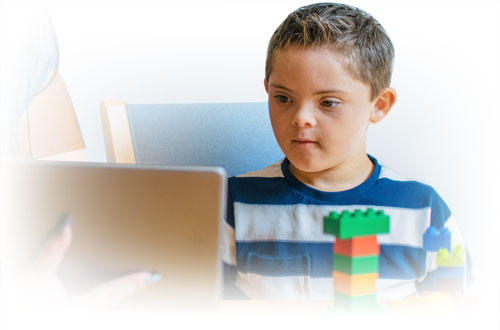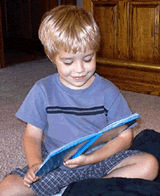Autism Spectrum Disorder Singapore
Autism Spectrum Disorder (ASD) is a developmental disorder that affects a person’s social interaction, behaviour, communication and main interests. The epidemiology of ASD is unknown, however there may be a genetic or neurological component to it. Autism is a Spectrum of disorders that manifest differently from person to person. It impacts severity, independence (level of support needed) and performance. Due to these reasons, an autism assessment is extremely important. At Dynamics Psychological Practice we use Gold Standard Assessment tools and follow the DSM-5 Diagnostic Criteria to ensure accurate measurement of the different symptoms.

Symptoms and Signs of ASD
- Children with Autism Spectrum Disorder struggle in two main areas of function:
- Social Communication.
- Restricted and Repetitive patterns of behaviour.
- Some symptoms include:
- Deficit in social communication skills across different settings.
- Struggling to make no eye contact.
- Reduced/no interest in peers.
- Difficulty interpreting and understanding the feelings and emotions of others.
- Prefer a specific “routine” and can have anxiety or tantrums when this order is disrupted.
The complete diagnostic criteria according to DSM-5 can be found on https://www.cdc.gov/ncbddd/autism/hcp-dsm.html
Diagnosis and Early Intervention
To help a child with autism it is important to make a diagnosis as early as possible. There is no known 'cure'. However, early intervention (speech therapy, occupational therapy, special education and behaviour support) makes a significant difference. Early intervention at a young age can help develop a child in new skill sets, manage behaviour problems and help the child develop as much independence as possible.
Autism Assessment
At Dynamics Therapy Centre for Kids, we use a variety of assessment tools to diagnose Autism Spectrum Disorder (ASD) and Social Communication Disorder. It is important to cover a few areas when testing for these disorders in order to ensure an accurate diagnosis.
ADOS-2 (Autism Diagnostic Observation Schedule 2nd Edition)
ADOS-2 is the gold standard assessment designed to diagnose Autism.
ADOS-2 is a standardized, semi-structured assessment of communication, social interaction and play for individuals who may have autism or Social Communication type of disorders. The ADOS-2 assessment consists of standardized activities that allow the examiner to observe behaviors identified as important in children with autism spectrum disorders. Structured activities and materials provide standard contexts in which social interactions, communication and other behaviors relevant to pervasive developmental disorders are likely to appear.
We administer ADOS-2 assessment to children, as part of an Autism assessment package which includes IQ testing and/or adaptive behavior scale, clinical observations and parent/teacher reports questionnaires. This assessment allows us to diagnose autism, and to indicate where on the spectrum the child is. Furthermore, the advantages of this test is that it allows us to examine and assess toddlers from the age of 18 month to 36 months and determine if they are at risk of being diagnosed with Autism when they are older.
Importance of Diagnosis:
- Placement in autism-specific schools.
- Establish baseline for intervention (e.g. repeating the ADOS-2 test after intervention can show improvement along the spectrum).
- Eliminate or confirm Autism Spectrum Disorder for suspected cases (Can be used as a differential diagnosis, especially for shy children or children with verbal difficulties).
FAQ's
We are able to help in several ways. If needed, we can provide a formal assessment (based on IQ testing, ADOS, and other diagnostic tools) to verify whether your child is indeed an ASD child.

We can also design an early intervention plan to address some particular symptoms your child exhibits. Such an early intervention plan will address sensory and daily skills (by an Occupational Therapist), Speech Language and Communication (by a Speech Therapist) and academic skills and social skills (by our special education teacher).
We are also providing autism-specific interventions, namely Relationship Development Intervention (RDI), and Structured Teaching.
Early intervention is important, as various studies has shown that early intervention is much more effective for ASD children.

Therapy for the ASD Child
Autism Spectrum Disorder (ASD)
ASD is a developmental disorder, characterized by difficulties in communication and language skills, imaginative play and social interaction, and odd behaviors. Children with ASD often show early signs of deficits in sensory processing and social responsiveness.
At Dynamics Therapy Centre for Kids we provide autism assessment services (using ADOS), Occupational Therapy, Sensory Integration Therapy, Social Skills Training, Remedial Teaching, and RDI®.
Early assessment of a child who is suspected to be on the spectrum is crucial so that intervention can start as early as possible.
The synthesis of all this information provides sufficient data to make a diagnosis.
The information taken from the collected data should be considered in respect to the DSM IV (Diagnostic and Statistical Manual, 4th Edition, 1994, American Psychiatric Association) criteria for autism. (The criteria can be viewed here http://ani.autistics.org/dsm4-autism.html).
We provide a comprehensive array of therapy services: Speech Therapy, Social Skills Training, Remedial Teaching, Occupational Therapy with emphasis on sensory integration, and RDI.
Individuals with ASD or Asperger Syndrom have severe difficulties with social skills. Social skills training helps such individuals to improve the way they interact with others. We provide social skills training in a one-to-one setting, as well as in a group setting. Social skills training makes extensive use of role playing, soft play, and games in order to allow the child to have fun while learning to improve his social skills. Our social skill training is conducted by a special education teacher with extensive experience. The sessions are tailored to the needs of individual children, and children in a group setting are chosen to ensure that the group session is effective.
Remedial teaching is defined as Specialized instruction for students deviating from the expected norm. At Dynamics Therapy Centre for Kids, we provide remedial teaching services by a special-ed teacher. For children with ASD, our remedial teaching sessions focus on structured teaching and the use of PECS (Picture Exchange Communication System) to achieve acadmeic intervention.
Sensory Integration refers to our ability to put together the inputs from our senses. The senses are meant to work together. Each sense provides certain input, and sensory integration is a critical function of the brain, that allows it to generate a composite picture. With this composite picture we are able to know where we are, what is going around us, and we are able to interact effectively with the surrounding.
While you are reading this page, your brain is automatically and unconsciously conducting sensory integration. You are coordinating your sight, sense of touch of the keyboard and mouse with certain movement to scroll the page. In more complex situations sensory integration synthesizes sight, sound, touch, movement, and body awareness.
For most children, sensory integration develops naturally, as they learn motor planning skills and to adapt to sensation. For some children, sensory integration does not develop as efficiently as it should, and this gives rise to problems in learning, development, or behavior.
When the sensory integration capabilities are not fully developed, the child will be unable to modulate, discriminate, coordinate or organize sensation adaptively. In particular this will cause diminished ability to interact effectively or efficiently with the demands of ones culture, environment, relationship or tasks.
ASD children often have difficulties in registration of meaningful sensory information which at times may lead to sensory overload or shutdown. The child often may have a heightened sensitivity to the sensory quality of the experience and this sensitivity can change with place and time
Modulation of sensory experiences is a process in which we gather information about the intensity, frequency, duration, complexity and novelty of the sensory stimuli as we prepare to create an adaptive response, may present as a difficulty for the ASD child.
Sensory integration therapy is aimed at improving the childs sensory integration capabilities, and in particular helping him/her to cope with processing sensory information and modulating it.
The Sensory Systems:
The Vestibular System (our sense of balance)
- Some ASD children experience severe reaction to a change in their head position and this might cause anxiety and fear
- These children may result in either seeking or avoiding movement that might be presented as:
- Rocking or rhythmic movements that can be referred to as calming or organizing motions
- Twirling and swinging motions that are considered alerting or activating
The Tactile System (our sense of touch)
- The system detects qualities and locations of external stimuli applied to the skin (light touch and deep pressure, vibration, temperature, texture and pain)
- The ASD child might demonstrate problems in processing tactile information
- Some will under react to touch and will need longer and stronger stimulation
- Others will over react to touch and texture and become defensive which can lead to discomfort in:
- Self care tasks, standing in a queue, engaging in creative activities and can impact social behavior by avoiding crowds and being touched by others
- Affecting food preference as some textures will be avoided, hence they can be very choosy about what they eat
Visual Processing (what we see and how we interpret it)
- Gives us the information about color, contrast, shape, form and movement. Helps us determine what to pay attention to and what to ignore and helps us direct our movement in the world
- Many ASD children are considered visual learners, their visual memory is strong and visual manipulation of objects is common
- They can be sensitive to lights, bright colors and have difficulty to sustain visual attention
Auditory Processing (what we hear and how we interpret it)
- The auditory system gives us information about the volume, tone, rhythm, and sequence of sounds
- Some ASD children experience sounds as painful and they are unable to filter out irrelevant noises
- At times the ASD child can give the impression that he has hearing problems (e.g. he might not respond to our verbal communication)
- Can seem inattentive to conversation, instructions and social communication
- Participation in social or community activities can be irritating to the child due to many unexpected noises
- Some can be observed covering their ears with their hands to block out sounds
Praxis (motor planning)
Difficulties in motor planning especially with ideation (an idea of how to approach a new task) can affect the quality of creative and imaginative play, engaging in new activities (hence the tendency to favor sameness and routine) and learning new skills
Sensory Integration Therapy
- Principles of SI theory are appropriate for intervention with the ASD child:
- Giving controlled and meaningful sensory experience to elicit adaptive responses is important to the therapeutic work
- Meaningful sensory experience is the most direct way to establish rapport
- An occupational therapy intervention usually starts as individual sessions in a therapeutic environment offering a variety of equipment and activities that will provide safe, purposeful and satisfying sensory experience
- Purpose of intervention is to provide the types of sensory experiences that will have most organizing effect, and analyzing them in order to offer appropriate activities to be applied at home or in school
- As caregivers there is a need to keep in mind that though therapy is helpful and can reduce many of the non adaptive behaviors, some of the ASD children (depending on the severity) might have sensory needs that will require attention throughout their lifespan
- It is recommended to design organizing and calming activities to be carried out at home to provide the child with sensory experiences daily as a Sensory Diet
- It is important that the caregiver will be involved in the therapeutic process
How can I find out more?
If you are interested in exploring therapy for your child, contact us at autism@dynamics.com.sg